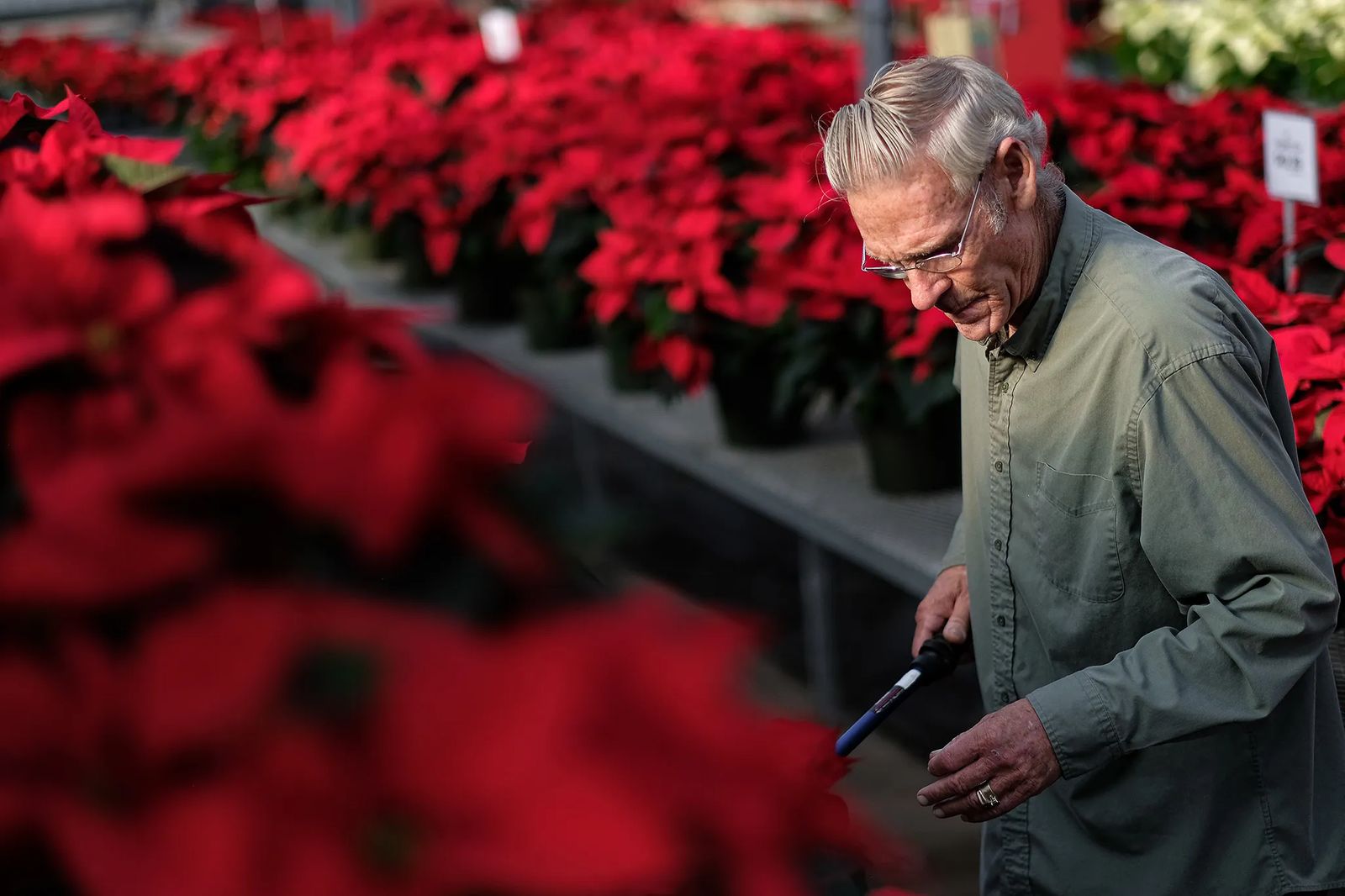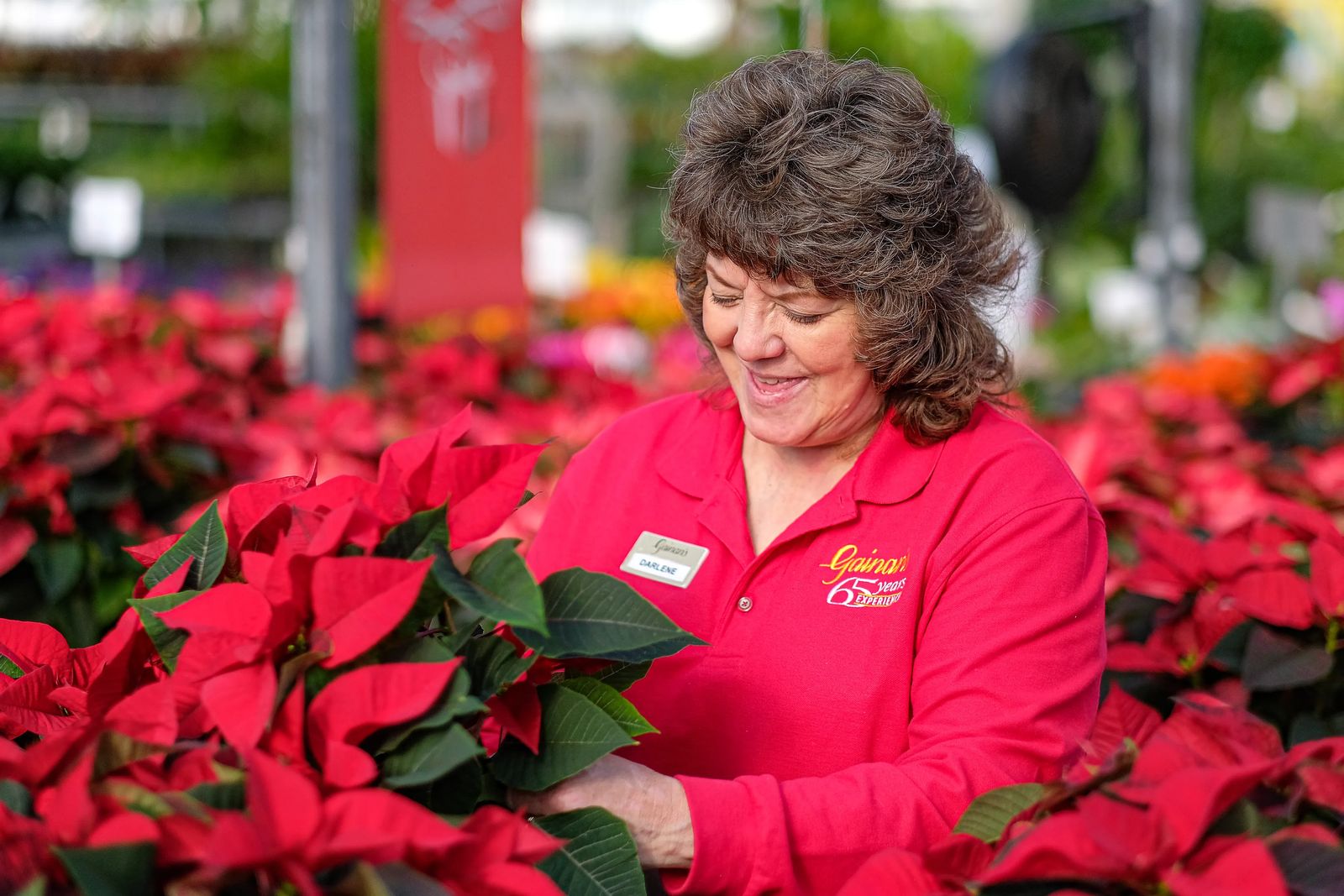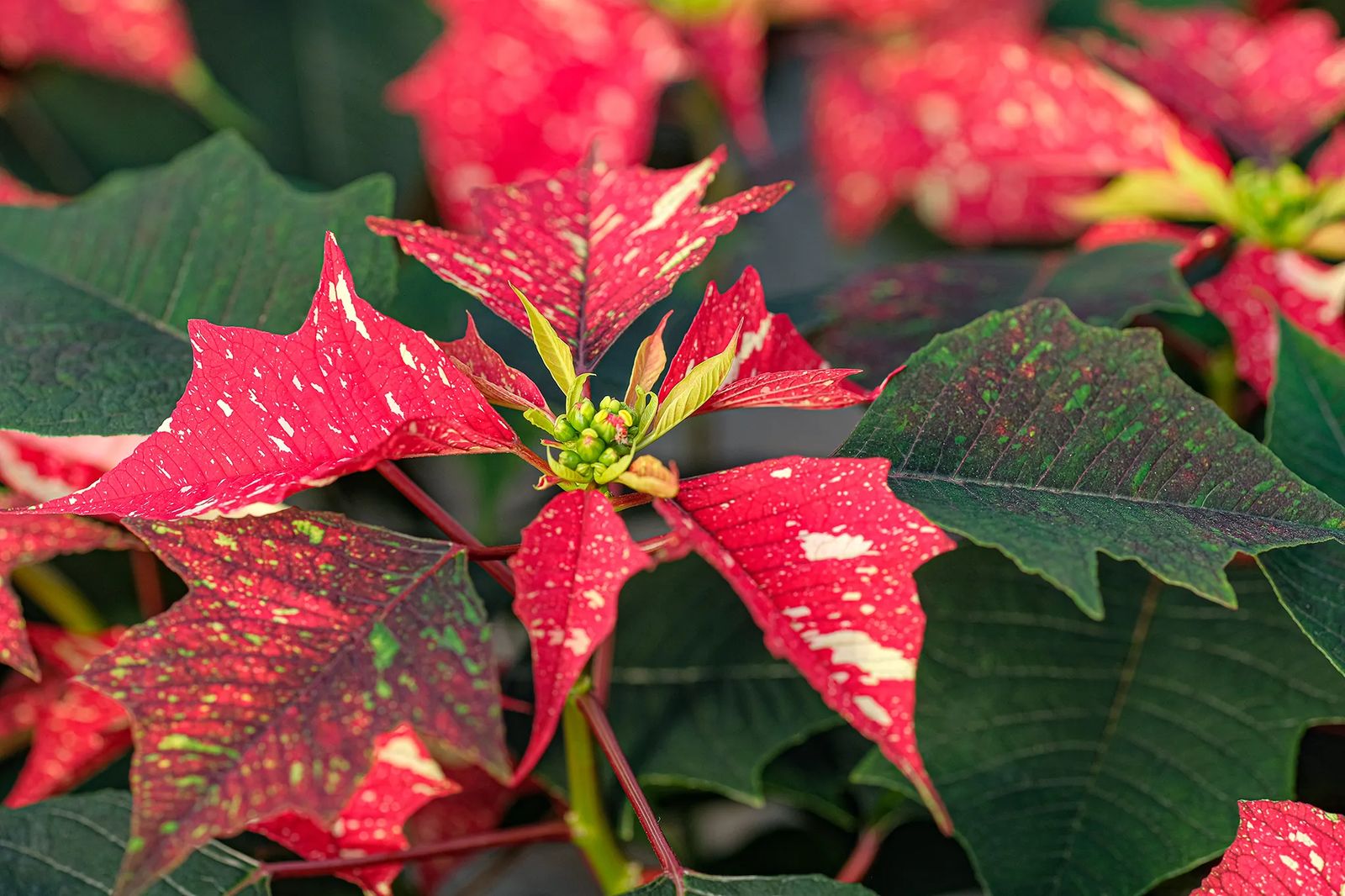
the Queens of Christmas
The many looks of the traditional poinsettia
With names as alluring as Christmas Beauty Princess, Superba Glitter, Winter Rose and Glory Red you’d expect to encounter a parade of holiday royalty. These queens of Christmas, however, are both new and beloved varieties of poinsettias. They range from bright ruby red to a deep burgundy to snow white and almost every shade between, and they’re just as beautiful as their names suggest.
These varieties of the iconic holiday plant start rolling into Gainan’s Midtown Flowers and the Heights Garden Center in early November where those in the nursery work to keep them beautiful all season long.
“We hope that when people think of poinsettias, they think of Gainan’s,” says Darlene Schlueter, the garden center’s manager.
Darlene has worked for Gainan’s Heights Garden Center for 26 years, starting out as a part-time waterer, and moving up to manager. She oversees the growing operations and plant purchasing. Over the years, Gainan’s has grown poinsettias, off and on, in their greenhouses on Bench Boulevard. For the past couple of years, however, they’ve opted to purchase poinsettia plants from a family-owned farm in Blain Washington.

“There are hundreds of varieties of poinsettias and they have perfected these varieties,” Darlene says. “We get in everything from the 2-inch minis to the 10-inch pots, which have three to four stems.”
This year, 1,500 poinsettia plants will grace the floors at both Gainan’s locations. If the past offers any predictions, by Christmas they will be sold out.
In the days when Gainan’s grew their own poinsettias, the process started with the delivery of thousands of tiny “plugs” in July. With careful tending they were ready for sale by start of December. Darlene misses those days. Poinsettias are one of her favorite plants, primarily because they are so unique, and the plant’s finicky blooming habits are so fascinating.
“I loved growing them,” Darlene says. “I liked teaching people how the color change worked.”

To understand what makes a poinsettia bloom requires a short lesson in photoperiodism, which is a sensitivity to light that occurs in plants. Many flowering plants are triggered to bloom by changes in the length of days. While most plants bloom as the days get longer, poinsettias are one of the few plants on the other end of the spectrum and bloom as the days get shorter. The blossoms on a poinsettia are the tiny yellow buds at the center of what looks like the flower. The “petals” are actually the poinsettia’s leaves that turn color as the days get shorter. For maximum color, their exposure to light shouldn’t be any longer than about eight hours.
Montana’s shorter days and longer nights are ideal for growing poinsettias, Darlene says, but they still need a little help with shading to bring them into their full color and to maintain their appearance. That’s why at 5 p.m. every night, blackout curtains are pulled across the greenhouse ceiling and the plants go into almost total darkness. They won’t be awakened until 8 a.m. the next morning. Even stray light from streetlights and passing car headlights can disrupt the coloring process, Darlene says.
“When you’re growing it’s very important to have that shading,” she says. “Without it, they can revert back to green.”

Although the plants require about 12 to 16 hours of total darkness a day to achieve their color while growing, once they’re in your home, Darlene said their color should stay under most normal home lighting situations.
Poinsettias are native to Central America, where they naturally bloom during the winter. They were first brought to the United States by Joel Roberts Poinsett, the first ambassador from the U.S. to Mexico. Their appeal, especially for holiday arrangements, grew in the early 1900s, and plant breeders have been perfecting the bright reds, bold pinks and snowy whites ever since.
During the season, the varieties aren’t just for sale, at Gainan’s, they are also on show. Visitors can look at each plant, voting on their favorite. While the contest is a way to interact with shoppers, it offers valuable insight for growers as to which poinsettias have the most appeal.
“Of course, red is always number one,” Darlene says.
As soon as last of the parade of holiday beauties goes out the door at Gainan’s Heights Garden Center, the focus shifts to spring. In January, the first deliveries of tiny plants for the spring and summer growing season start arriving. Darlene says at Gainan’s there’s always a little something green to appreciate.

HOW TO CARE FOR YOUR POINSETTIA
You’ll want to take proper care of your poinsettia to keep it looking vibrant and fresh throughout the holiday season. To start, you’ll want to be sure it’s wrapped well to protect it from December’s cold temperatures. Exposure to temperatures below 55 degrees for more than a few minutes can cause the plant to drop its leaves.
Once home, place the plant in an area of your house with natural light, but not direct sun. Avoid placing it where it will be hit with cold drafts and keep it away from heat sources like radiators and heating vents. Color is best maintained when the plant is kept between 72 degrees during the day and 60 degrees at night. Water your plant when the soil surface is dry to the touch. Saturate it thoroughly, until water runs through. Let it drain well, and don’t let it sit in water.
Poinsettias are not poisonous but likely to cause an upset stomach if ingested by pets and people, so keep them out of reach.











